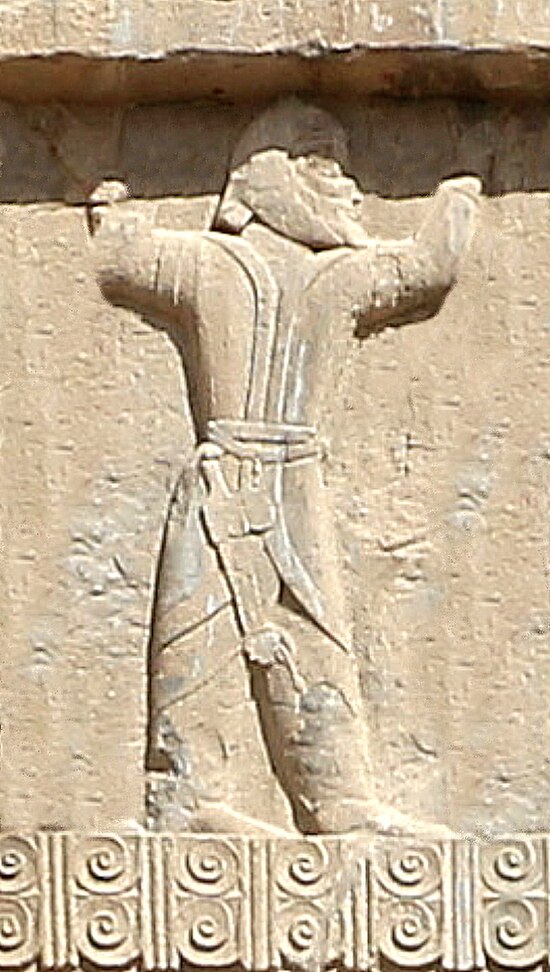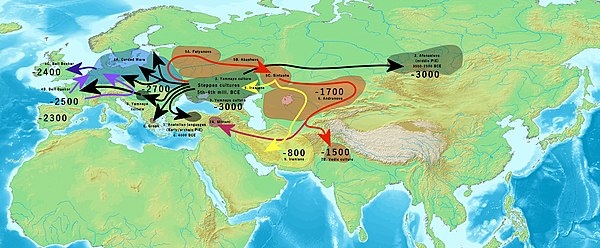Sogdia
Videos
Page
Sogdia or Sogdiana was an ancient Iranian civilization between the Amu Darya and the Syr Darya, and in present-day Uzbekistan, Turkmenistan, Tajikistan, Kazakhstan, and Kyrgyzstan. Sogdiana was also a province of the Achaemenid Empire, and listed on the Behistun Inscription of Darius the Great. Sogdiana was first conquered by Cyrus the Great, the founder of the Achaemenid Empire, and then was annexed by the Macedonian ruler Alexander the Great in 328 BC. It would continue to change hands under the Seleucid Empire, the Greco-Bactrian Kingdom, the Kushan Empire, the Sasanian Empire, the Hephthalite Empire, the Western Turkic Khaganate and the Muslim conquest of Transoxiana.

Sogdian soldier circa 338 BCE, tomb of Artaxerxes III.

Sogdians on an Achaemenid Persian relief from the Apadana of Persepolis, offering tributary gifts to the Persian king Darius I, 5th century BC

Head of a Saka warrior, as a defeated enemy of the Yuezhi, from Khalchayan, northern Bactria, 1st century BCE.

A Yuezhi (left) fighting a Sogdian behind a shield (right), Noin-Ula carpet, 1st century BC/AD.
Iranian peoples
Videos
Page
The Iranian peoples or Iranic peoples are a diverse grouping of peoples who are identified by their usage of the Iranian languages and other cultural similarities.
![The Bistun Inscription of Darius the Great describes itself to have been composed in Arya [language or script].](https://upload.wikimedia.org/wikipedia/commons/thumb/0/04/Darius_I_the_Great%27s_inscription.jpg/600px-Darius_I_the_Great%27s_inscription.jpg)
The Bistun Inscription of Darius the Great describes itself to have been composed in Arya [language or script].

Early Indo-European migrations from the Pontic steppes and across Central Asia.

According to Allentoft (2015), the Sintashta culture probably derived from the Corded Ware culture.

Saka horseman, Pazyryk, from a carpet, c. 300 BC